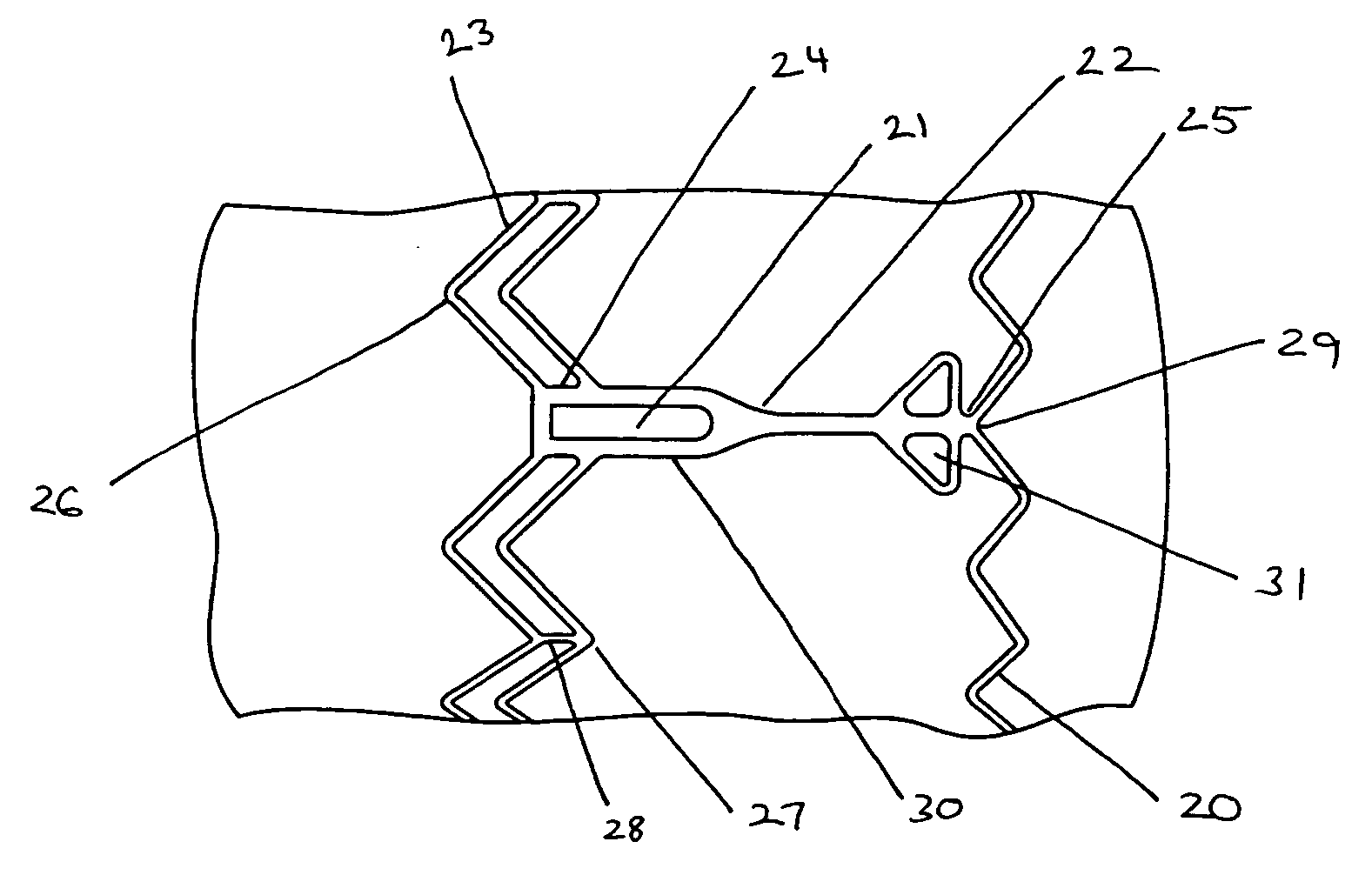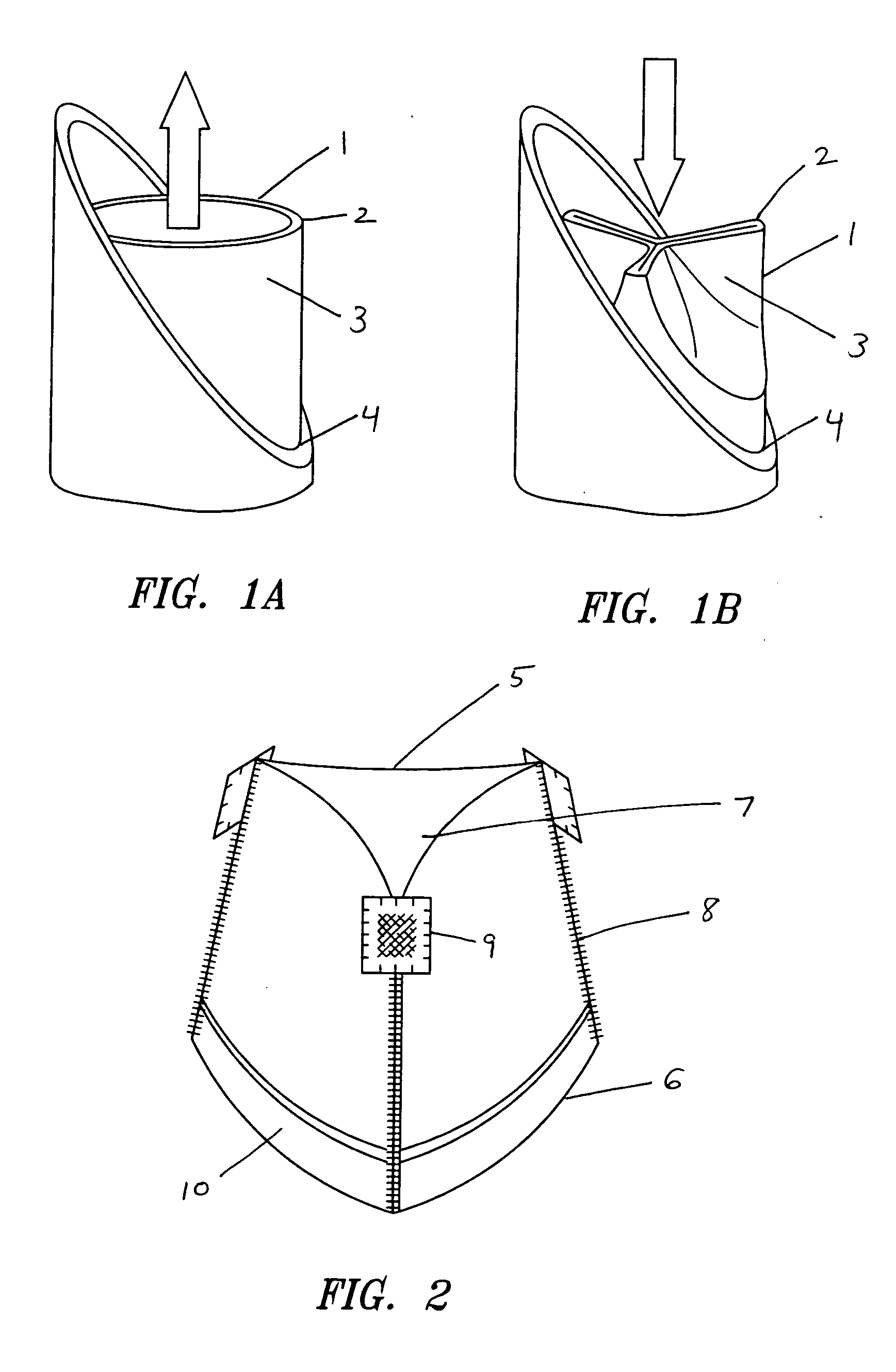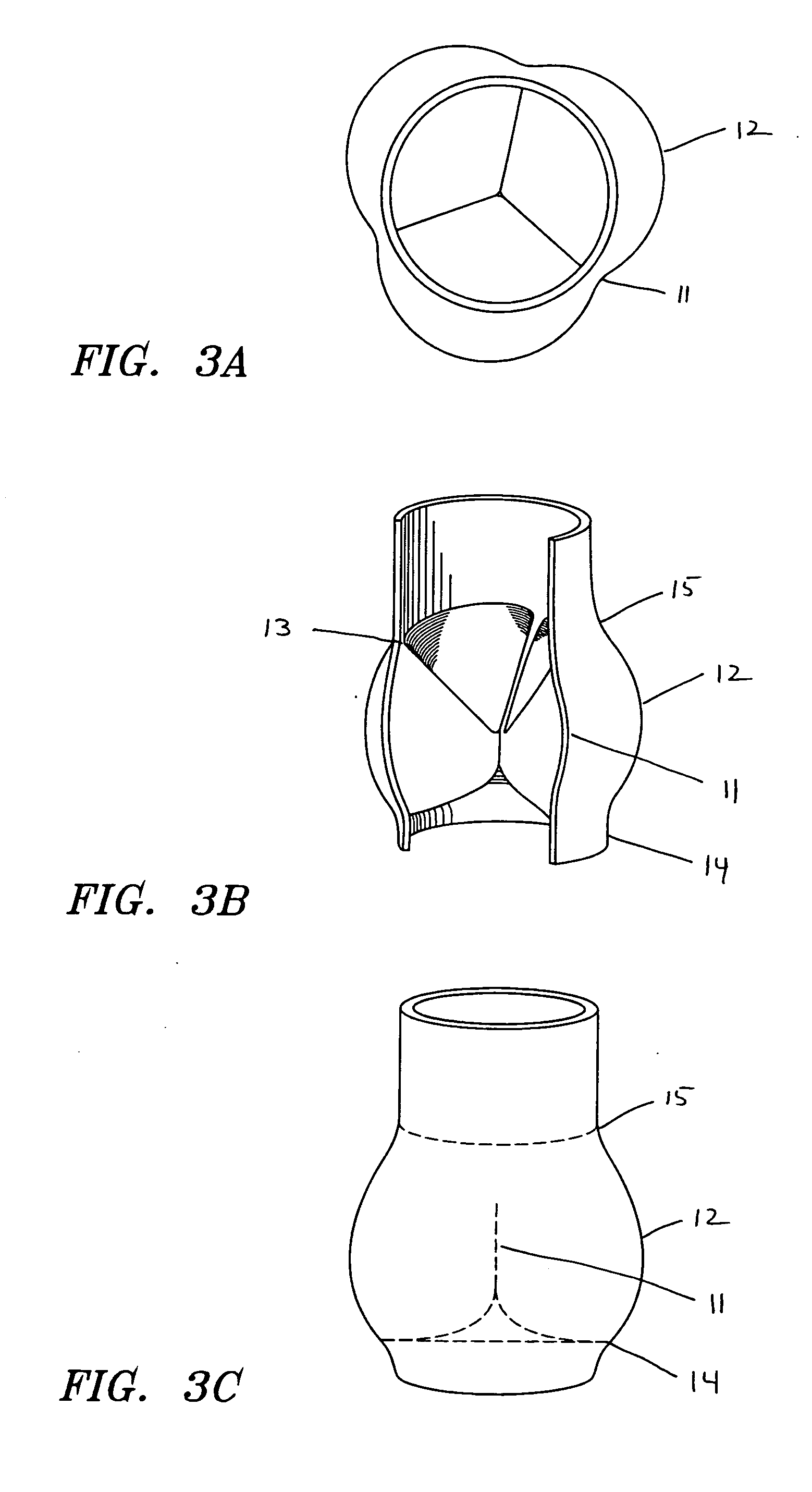Minimally invasive valve replacement system
- Summary
- Abstract
- Description
- Claims
- Application Information
AI Technical Summary
Benefits of technology
Problems solved by technology
Method used
Image
Examples
Embodiment Construction
[0078] The present invention relates to valve replacement systems and devices. As illustrated in FIG. 1, a valve (1) comprises a distal or outflow end (2), leaflets (3) and a proximal or inflow end (4). A typical valve functions similar to a collapsible tube in that it opens widely during systole or in response to muscular contraction, to enable unobstructed forward flow across the valvular orifice (FIG. 1A). In contrast, at the end of systole or contraction, as illustrated in FIG. 1B, as forward flow decelerates, the walls of the tube are forced centrally between the sites of attachment to the vessel wall and the valve closes completely.
[0079] Replacement Valves
[0080] A preferred valve (5) for use with the systems and devices of the present invention is illustrated in FIG. 2 and is comprised of a body having a proximal end or inflow ring (6) and a distal end or outflow ring (7). The body is comprised of multiple leaflets of valve tissue joined by seams (8), wherein each seam is f...
PUM
 Login to View More
Login to View More Abstract
Description
Claims
Application Information
 Login to View More
Login to View More - R&D
- Intellectual Property
- Life Sciences
- Materials
- Tech Scout
- Unparalleled Data Quality
- Higher Quality Content
- 60% Fewer Hallucinations
Browse by: Latest US Patents, China's latest patents, Technical Efficacy Thesaurus, Application Domain, Technology Topic, Popular Technical Reports.
© 2025 PatSnap. All rights reserved.Legal|Privacy policy|Modern Slavery Act Transparency Statement|Sitemap|About US| Contact US: help@patsnap.com



